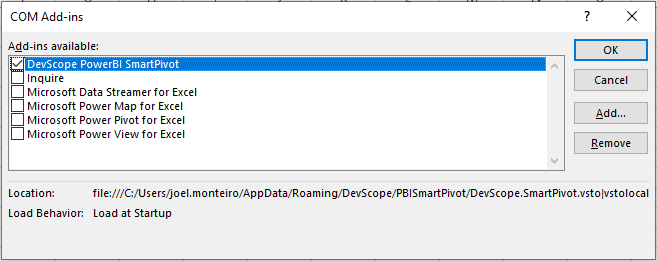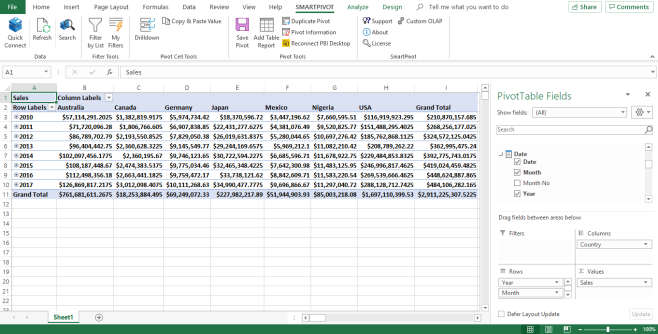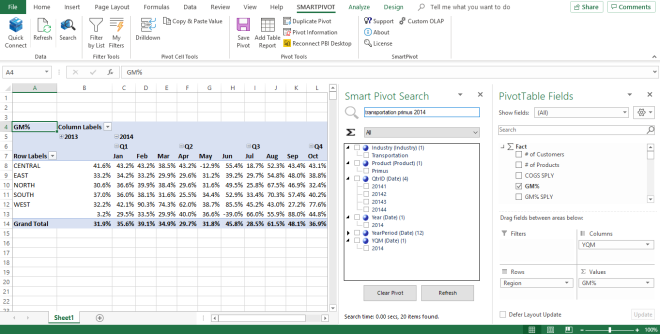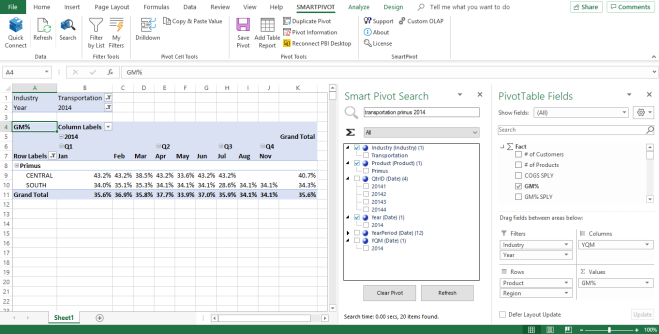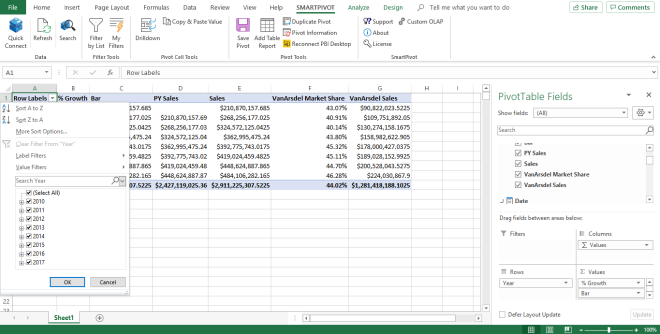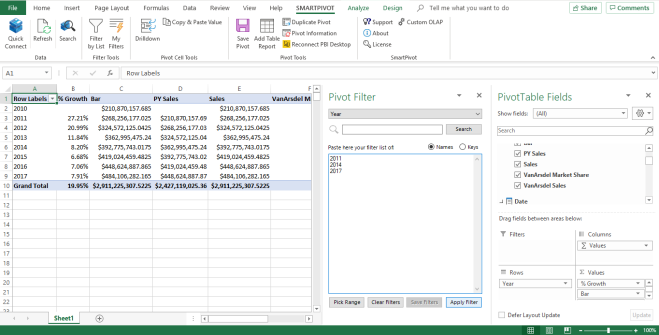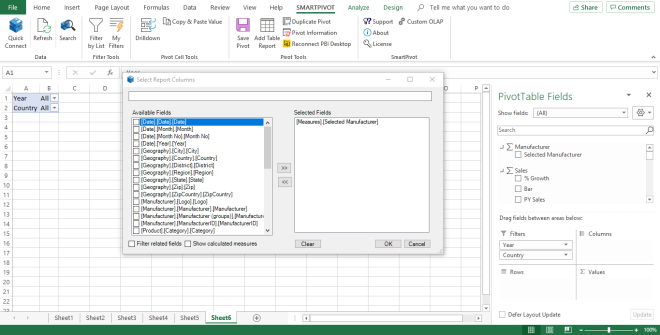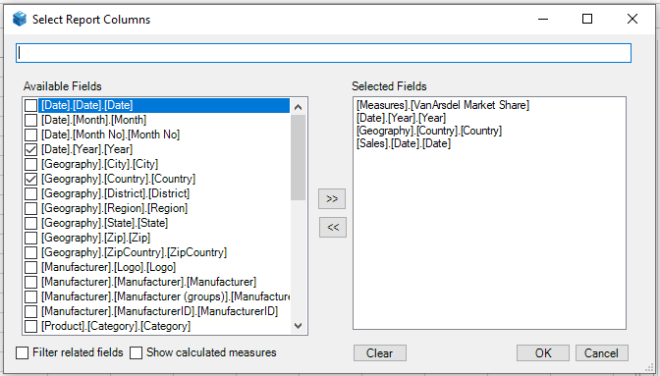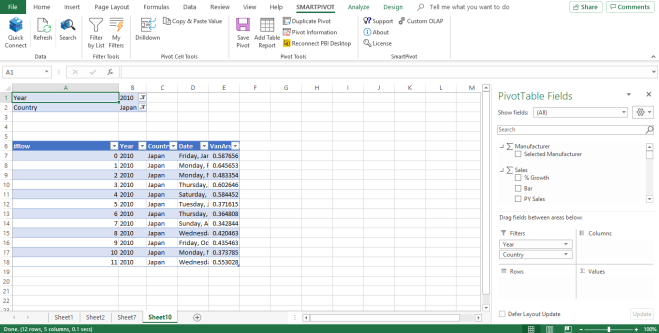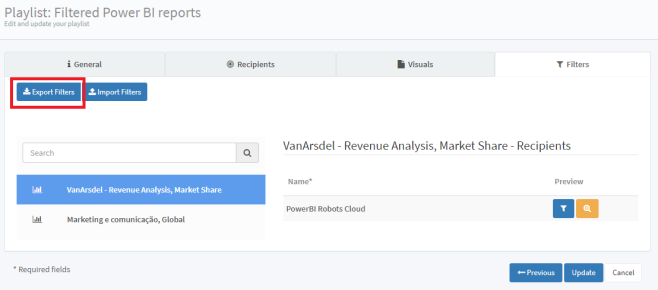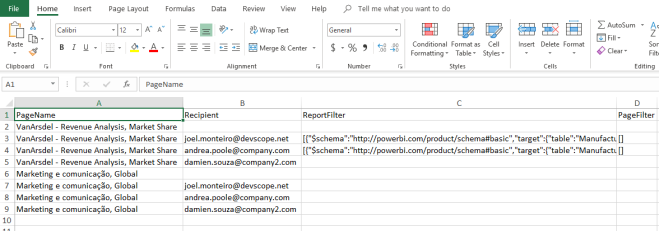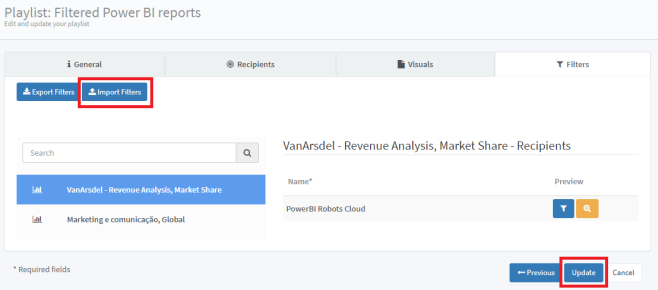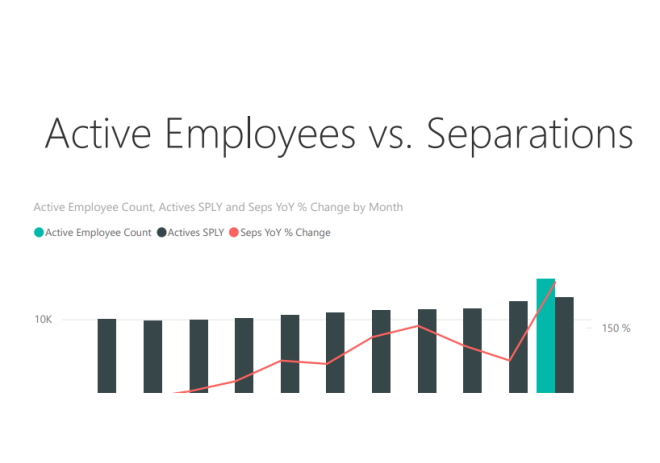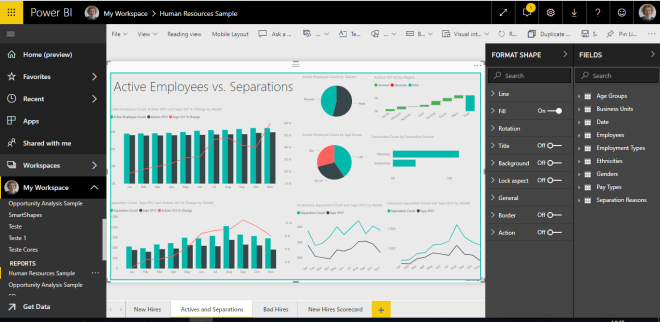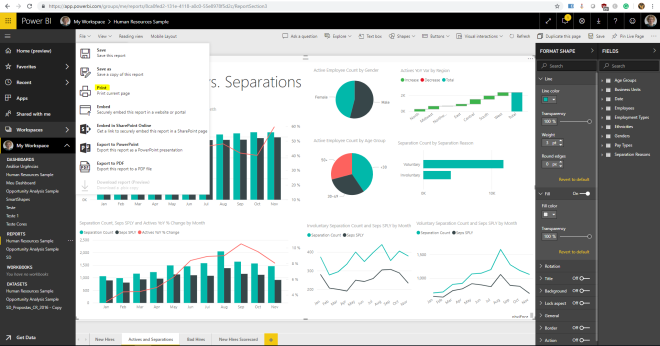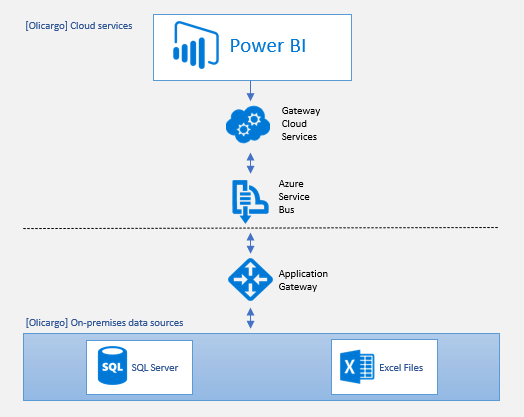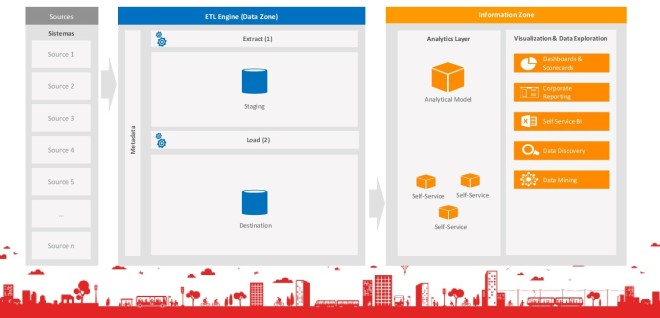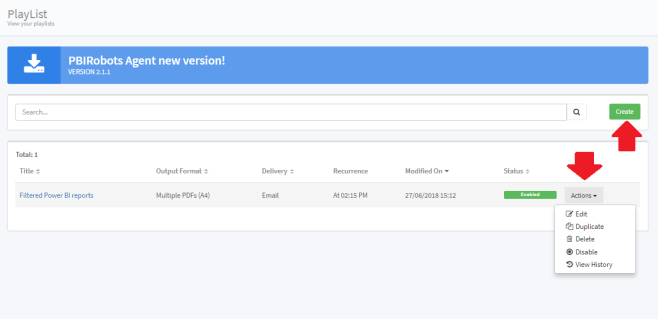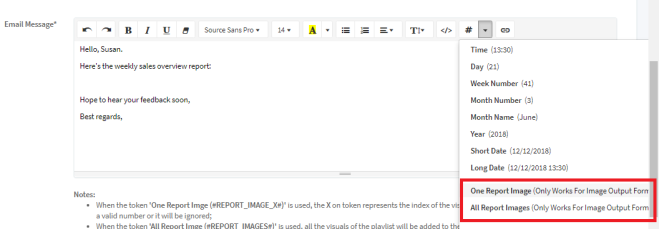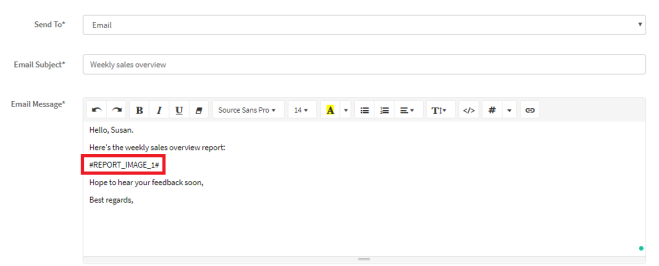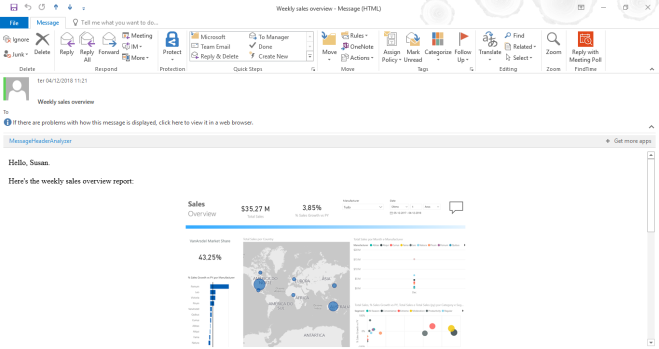When it launched in March of 2018, PowerBI Robots introduced many features Power BI users had been asking for years, like the ability to schedule and recurrently send reports by email, to a SharePoint library or display them on a large TV screen. Since then, Microsoft gradually added these features to Power BI in one way or another, but the way scheduling, report content or the slideshow are handled couldn’t be more different.
We broke down the main differences between Power BI’s email subscription service and PowerBI Robots in the following table, but keep reading for a deeper look at each of them:
| Microsoft Power BI |
PowerBI Robots |
| Sends a preview image of a report or dashboard and a link to access it on Power BI Online | Sends various reports as high-definition images, on a single PDF or multiple PDFs |
| Sends only 1 report page per subscription | Sends unlimited report pages per subscription |
| Sends reports to email addresses | Sends reports to email addresses, SharePoint folders, filesystems or to a URL |
| Sends reports to anyone in your organization | Sends reports to anyone, even if outside your organization |
| Sends reports once a day, once a day after data refresh, or once a week | Sends reports whenever you want, from once every 10 minutes to only once a year |
| Link to the reports don’t keep applied filters | Reports are sent with applied filters |
| Doesn’t allow any filtering customization | Sends different filtered reports to different users |
| No email body customization | Full email body customization |
| Slideshow mode with no data refresh | Slideshow mode with data refresh |
Scheduling:
Setting a recurrence for report delivery was the main driver behind PowerBI Robots’ development, as clients were begging for a method to update people who didn’t use Power BI but had to take a look at the data in the reports. PowerBI Robots recurrence can be set for a large variety of intervals, ranging from once every 10 minutes to once a year. Soon, it will support other forms of recurrence, such as specific days of the week.
This type of recurrence is already supported by Power BI’s scheduling system, but it severely limited to 3 options: once a day, once a day after data refresh and once a week. This means that if you need to inform someone more than once a day or only once a month, you can’t do it using Power BI alone.

Supported formats:
Email is the only delivery method supported by Power BI and sending reports by email is limited to users from your organization, as Power BI will prevent you from adding any “outsiders” to your subscription’s mailing list.
Email is by far the preferred delivery method among PowerBI Robots users, although the solution supports additional delivery methods that can make a difference in some organizations. Sending reports to a SharePoint or Filesystem folder comes in hand when you want to share information with a large pool of individuals, and soon you’ll be able to keep a record of these reports in the form of screenshots or PDF files, a new feature geared towards auditing scenarios. PowerBI Robots also allows companies to share reports and dashboards with emails outside their organization, one of the most common scenarios among its users, as covered in our SPAR and Olicargo case studies. The body of emails in PowerBI Robots is also fully customizable and includes tokens for the most common fields.
Content:
Content is where Power BI’s subscription service and Robots’ differ the most. When you send a report via email through Power BI, users receive a preview picture (PNG) accompanied by a link to navigate the report on Power BI Online. In contrast, PowerBI Robots sends reports as high-definition static pictures (either embedded or as attachments if you choose email as your delivery method) or single or multiple PDF files, not allowing users to access and navigate the full report on Power Online.
Power BI is severely limited to a single dashboard or report page per subscription, whereas PowerBI Robots works with a playlist method that supports as many report pages per subscription as you wish. This allows you to set up a single subscription with multiple report pages, the exact opposite of what you would have to do on Power BI – where you would need multiple subscriptions with single report pages to achieve the same effect.
Filtering:
Scheduling through Power BI doesn’t allow for any filtering since what you’re sharing is access to your whole report. By clicking the link and accessing the report on Power BI Online, users can apply any filters of their choice, so there’s no point doing it before setting up the scheduling.
Since PowerBI Robots’ purpose is wholly different – sending high-quality images of reports -, users are free to set up any filtering of their choice. Static images remove interaction and access to all information from reports, but sometimes that’s exactly what users may want. In the SPAR case we mentioned before, we had a chain of over 100 stores that shared a common Power BI central dataset. Because each had its own administration, reports had to be filtered to ensure they didn’t have access to data from other stores. PowerBI Robots allows you to apply different layers of filtering: at a global level, and individual filters per user, allowing you to send different data to different people, from the same report.

Slideshow:
During March’s update, Microsoft introduced a slideshow feature in the Power BI Windows app, a feature that lets you present a report and rotate between its pages automatically, based on a pre-set frequency between 5 and 30 seconds. The slideshow is part of Power BI’s presentation mode, which is supported on any device running Windows, be it a Surface Hub, a desktop or a tablet.
PowerBI Robot’s slideshow feature works a bit differently, since it doesn’t run directly from Power BI, but the cloud. PowerBI Robots generates a unique URL for your playlist that you can paste on any browser to start a slideshow. The frequency between slides starts at 10 seconds and goes up to 5 minutes. Unlike Power BI’s slideshow, Robots doesn’t allow you to pause your presentation, but, on the other hand, it always displays a report’s most recent data, something Power BI alone doesn’t do.

If you have any questions or need help using PowerBI Robots, please check the product’s 101 guide or contact us by email.



 Click the License button and introduce the key emailed to the address you used to register for the PowerBI SmartPivot trial. Once validated, all options will become available.
Click the License button and introduce the key emailed to the address you used to register for the PowerBI SmartPivot trial. Once validated, all options will become available. NOTE: if you don’t see the SMARTPIVOT tab in Excel, go to File > Options and click the Add-ins tab.
NOTE: if you don’t see the SMARTPIVOT tab in Excel, go to File > Options and click the Add-ins tab. From the Manage dropdown menu, select COM Add-ins and click the Go button. Make sure the DevScope PowerBI SmarPivot check-box is ticked and click OK.
From the Manage dropdown menu, select COM Add-ins and click the Go button. Make sure the DevScope PowerBI SmarPivot check-box is ticked and click OK.